Your Guide to Driving in Mallorca
Planning a road trip to Mallorca? We absolutely loved it so I would definitely recommend you do it too. After recently taking our own vehicle on the overnight ferry from Barcelona to Palma and spending ten amazing days in Santa Ponsa, I’ve written you some essential tips to help you with driving in Mallorca.
Whether you’re considering renting a car for driving in Mallorca or bringing your own, like we did, here is some information I think you need to consider. From parking tricks in busy resort towns to understanding local driving habits.
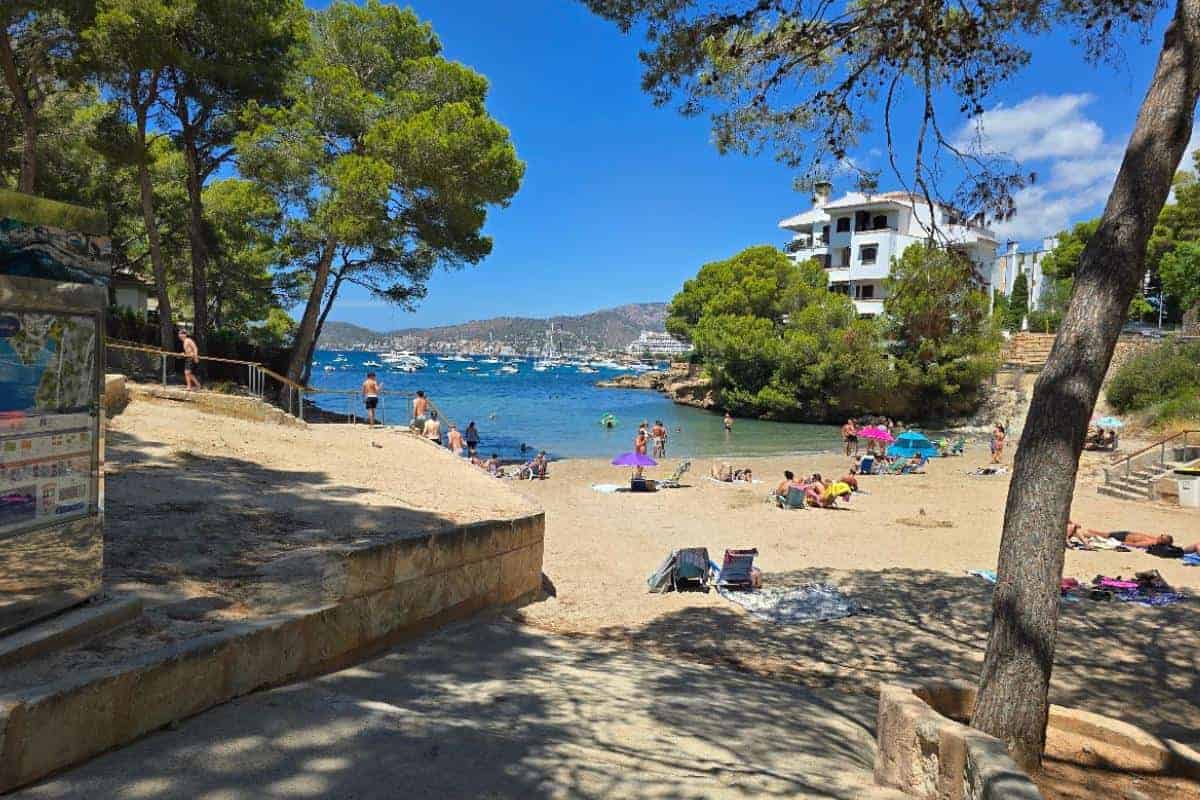
The freedom of having your own car in Mallorca gives you so many more options, flexibility, a chance to explore if you choose, and of course, being able to avoid public transport.
Getting Your Car to Mallorca
Taking the Ferry from Barcelona
The overnight ferry from Barcelona to Palma is a fantastic option if you’re already in Spain or prefer travelling with your own vehicle. We chose this route and enjoyed it, especially the views when leaving Barcelona at night. The journey takes about nine hours, leaving at around 9 pm and docking in Palma at around 6 am. The daytime ferry is a little quicker and takes more like 7 hours.
Book your ferry tickets well in advance to ensure you get times that work for you, in the summer they can get booked up quickly. Prices vary with July and August, as always, being the most expensive. You will also pay more for a cabin but if you are travelling overnight, I think this is essential. The ferry terminal in Barcelona is easily accessible. I advise you to arrive at least 90 minutes before departure to allow time to collect tickets and wait for boarding. It is also worth being aware that the nearest toilets to where you park for boarding are around a 5-minute or so walk to the ferry buildings.
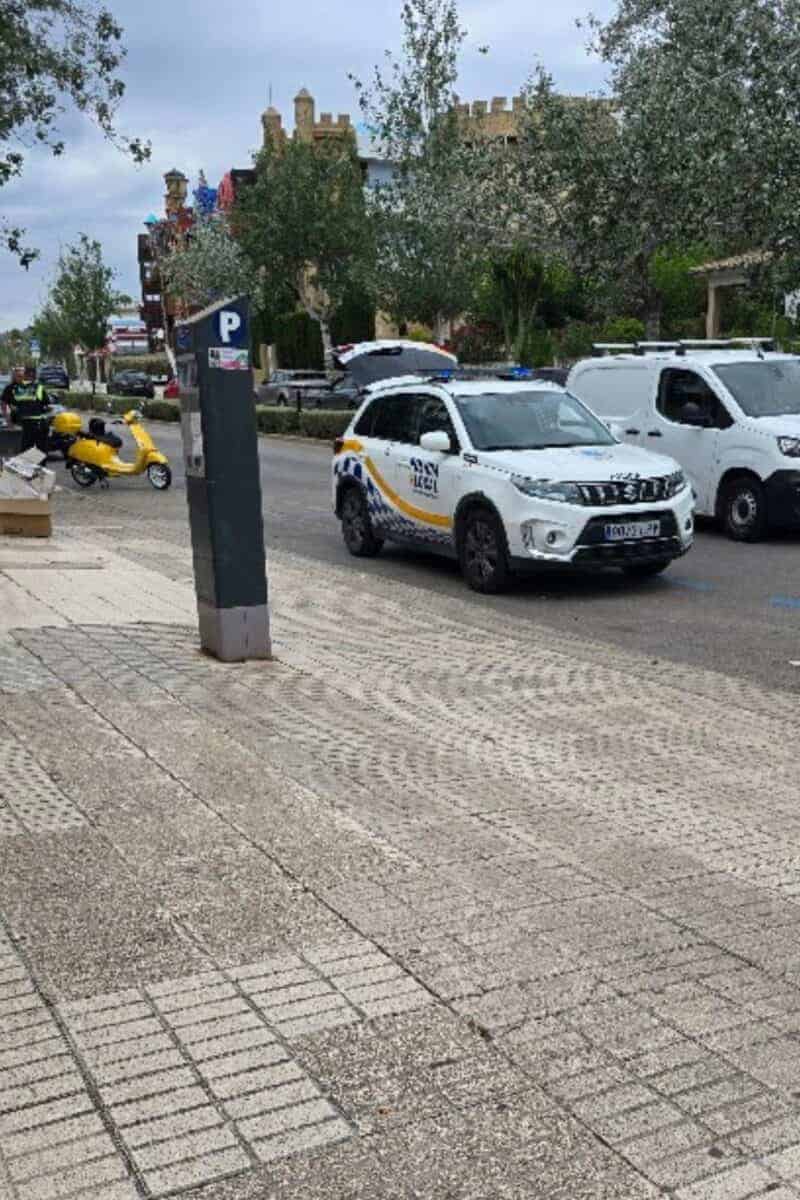
Renting a Car in Mallorca
If flying in, renting a car in Mallorca is easy enough; my sister-in-law has done it many times. Palma Airport has all major rental companies, plus some local companies. Book online before travelling for the best offers.
Considerations when choosing your rental car for driving in Mallorca:
- Size matters: Mallorca’s older town centres have narrow streets. A smaller car makes parking much easier.
- Automatic vs manual: Automatic cars cost more but reduce stress, especially on hillier routes. Which do you feel more comfortable with? For me, it has to be manual, I do not like automatic!
- Insurance: Check what’s included and consider whether you need additional coverage for peace of mind.
- Fuel policy: Full-to-full policies are usually fairest and make life easier.
Essential Driving Rules and Regulations
As Mallorca is part of Spain, the driving rules are the same as driving in mainland Spain. Driving in Mallorca is very similar with only a few minor differences I notices, mostly around attitudes rather than rules.
Documentation Required
It is always sensible to carry your driving licence, passport, and vehicle documents. If renting a car, keep the rental agreement accessible too. UK licences are valid for short-term visits such as 2-week holidays, but check current post-Brexit requirements before driving in Mallorca for longer periods.
Your vehicle must have appropriate insurance covering Spain. If bringing your own car, be sure to check in plenty of time that your policy includes European insurance cover. You should also check if your breakdown cover includes Europe or if you need to add it for a little extra. Rental cars include all necessary insurances, though the excess can be substantial, so be sure to include these when looking at prices!
Speed Limits and Traffic Rules
Spanish speed limits are strictly enforced when driving in Mallorca:
- Urban areas: 50km/h (31mph), reduced to 30km/h (19mph) in many residential zones
- Rural roads: 90km/h (56mph)
- Dual carriageways: 100km/h (62mph)
- Motorways: 120km/h (75mph)
If you have already been driving in Spain, or even driven through France and then Spain like we did, then your car is likely set to Kilometres so try not to worry about the conversions and just stick to the speed limits in km while driving in Mallorca.
Speed cameras are common, particularly on the edges of towns. Local police also conduct regular spot checks. Fines are hefty and rental companies, I am told, often charge administrative fees for passing on tickets.
Roundabouts are everywhere in Mallorca. Always give way to traffic already on the roundabout, and indicate when you are exiting. Again, if you have already driven through other parts of Europe, this will be second nature by now.
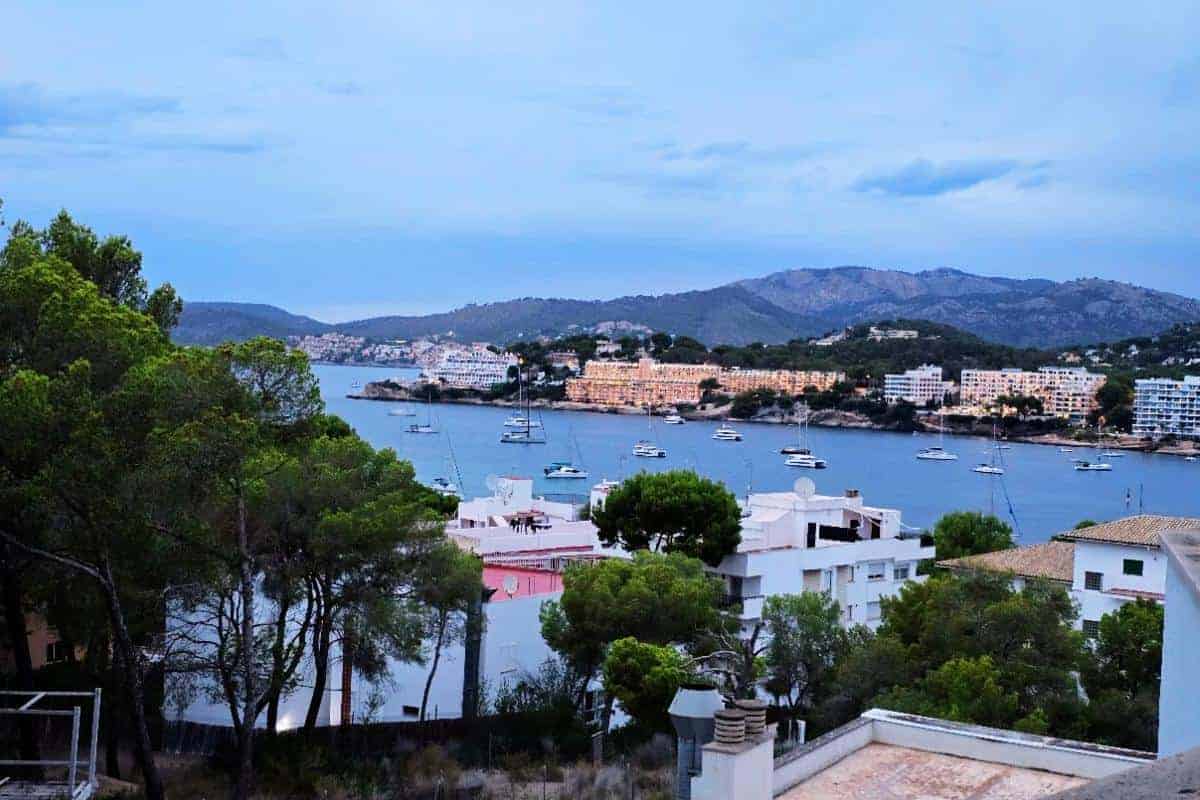
Mallorca’s Roads
Main Routes and Motorways
Driving in Mallorca, the road network is generally excellent. One main motorway circles most of the island, connecting major towns. We used this route, finding it all clearly signposted and good to drive on, the UK should be this good!
From Palma to the western resorts like Palma Nova, Magaluf, and Santa Ponsa, the motorway is definitely the quickest route. This drive takes about 20-30 minutes, depending on traffic.
The drive from Santa Ponsa to Alcudia, which we completed at the end of our holiday, takes approximately 90 minutes via the motorway. This route is beautiful and you can see some of the lovely Mallorcan landscapes without having to drive on country roads!
GPS and Navigation Tips
While GPS is essential for driving in Mallorca, we never rely on it. I recommend:
- Download offline maps: Phone signal can be patchy in rural areas
- Learn key Spanish road terms: “Salida” means exit, “Centro Ciudad” means city centre
- Keep a physical map or written instructions: Backup navigation never hurts
Parking
Resort Town Parking
Parking in popular destinations like Palma Nova and Magaluf can be tricky, as other than locals, very few people drive here as many fly to their holiday, of course. Most hotels offer parking, but spaces are limited and can cost. We stayed in Santa Ponsa and our hotel had free parking so we didn’t need to look for parking options; however, there appeared to be a lot of on-street parking with varying charges.
Be careful to only park in places you are allowed, as a number of times during our stay, I saw the local police stop and tell people off for where they were parked. I didn’t look close enough to see if they got a ticket, but the idea scares me, so I would only ever park in proper parking bays now.
Palma City Parking
Palma’s historic centre is said to be challenging for drivers. The old town has narrow streets so difficult for larger vehicles or anxious drivers, and parking is limited. You could save money by parking outside the centre and walking or using public transport.
Several large car parks are around the city centre, including an underground one near the cathedral and shopping areas. Expect to pay premium rates, especially during cruise ship days.
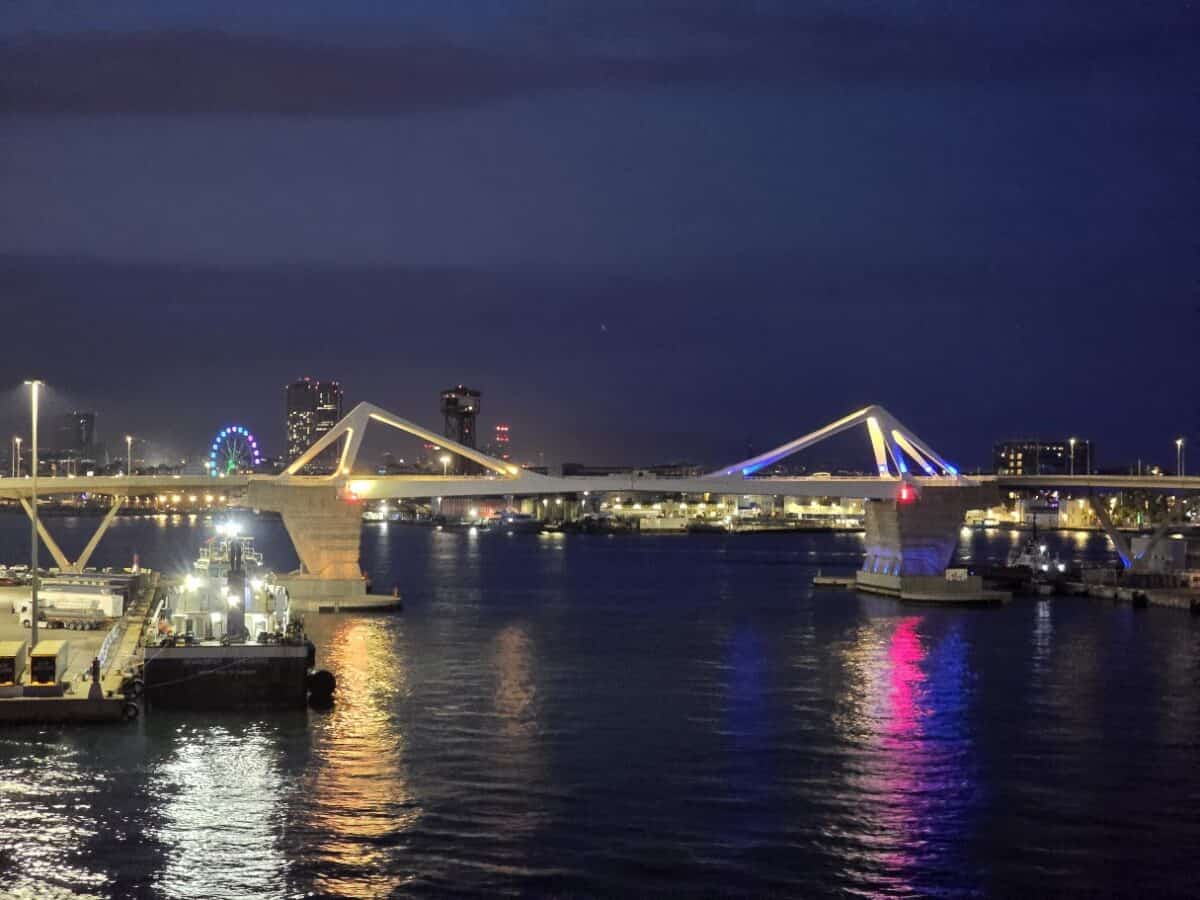
Understanding Local Driving Culture
Spanish Driving Habits
Spanish drivers can seem aggressive to British visitors, but they’re generally skilled and predictable. Expect the following when driving in Mallorca:
- Closer following distances than you might prefer, taxis particularly are good at tailgating!
- More assertive lane changing and overtaking, cars can appear from nowhere and then suddenly accelerate and overtake in seconds!
- Horns are used as communication rather than aggression so try not to take that personally.
- Relaxed attitudes to traffic rules eg seatbelts!
Don’t take this personally. Spanish driving culture focuses on quick and direct driving over politeness. The taxis particularly seem to come from nowhere, so keep an eye out for them!
Tourist Considerations
As obvious tourists, you might find some local drivers get impatient. Don’t let this pressure you and make you panic, as long as you are driving safely, they will overtake and get past you soon enough. Drive at comfortable speeds for you and take the time you need at junctions.
Many accidents involve rental cars driven by nervous tourists. Extra caution at roundabouts, one-way systems, and when parking usually prevents many problems.
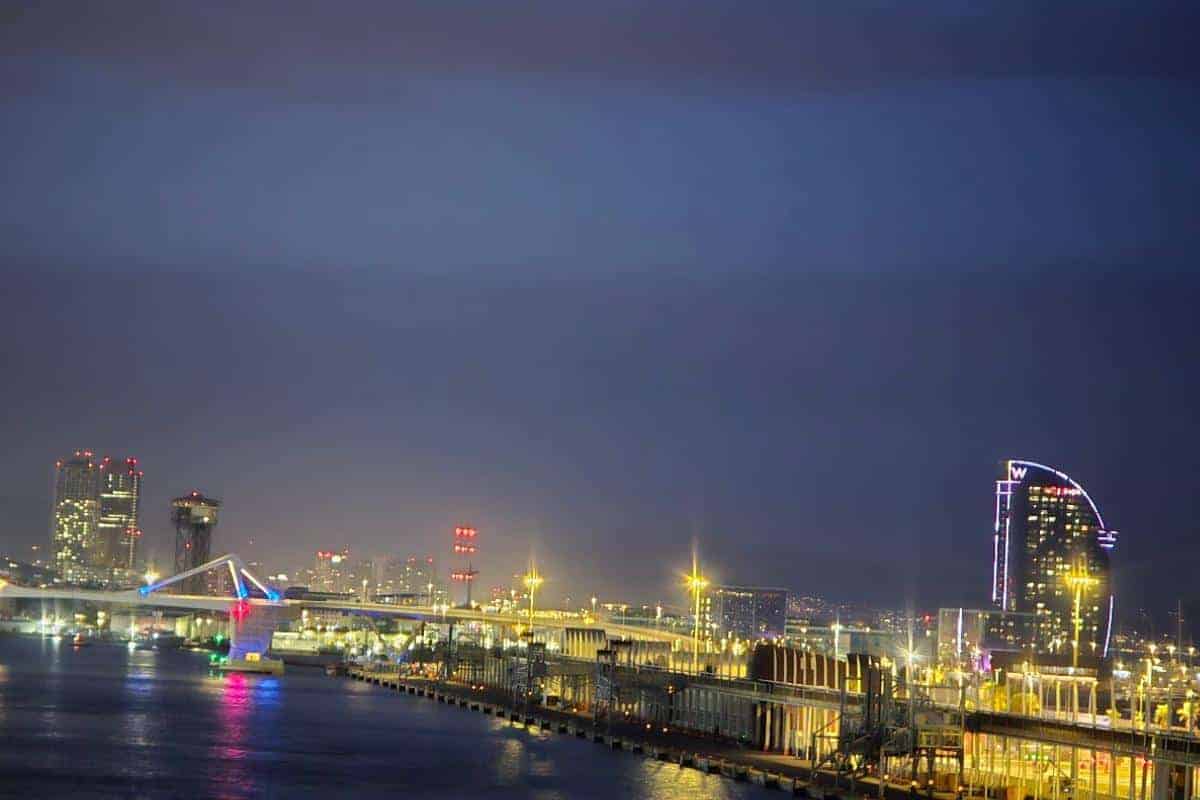
Seasonal Driving Considerations
Summer Challenges
July and August bring intense heat and maximum tourist numbers. Air conditioning becomes essential for driving in Mallorca rather than optional. Traffic increases too, particularly around popular resorts and beaches.
Early morning and late evening driving is usually better with cooler temperatures and much lighter traffic. When we drove from Palma port at 6am, it was really quiet and made things much easier than later in the holiday when we drove to Alcudia. That said, we never found the roads to be too busy or stressful.
Winter Advantages
Winter will provide much easier driving, but then the temperatures are not as hot as you may like for your holiday. Also, it is worth remembering that tourist resorts such as Palma Nova and Magaluf have a lot of closures when it isn’t the peak season, so your holiday would be very different.
Safety Tips for Driving in Mallorca
Emergencies
Keep emergency contact numbers accessible:
- Emergency services: 112
- Guardia Civil: 062
- Local police: 092
Rental companies provide 24-hour breakdown numbers. If bringing your own vehicle, check your breakdown cover includes Spain and the Balearic Islands.
Personal Safety
Mallorca is usually safe, but tourist areas, like anywhere else in the world, can attract opportunistic crime. Use the same advice as you would anywhere else and never leave valuables visible in parked cars. Hotel safes are better for passports, extra cash, and electronics. If you must leave them in the car, always hide them well.
Our thoughts
Driving in Majorca or Mallorca if you prefer, was amazing and made our holiday exactly what we wanted. Whether you choose to rent a car in Mallorca or bring your own via ferry, the freedom to explore at your own pace opens up experiences you wouldn’t have if you flew in.
We had an amazing holiday, and while we didn’t use our car whilst at the hotel, we didn’t explore the island as much as we could. There are so many advantages to driving on holiday, including easier trips to supermarkets if you are self-catering, the ability to take more luggage than you would on a plane, and the adventure along the way of getting there and home!
Would you consider driving in Mallorca? Or perhaps you would do what we did and drive from the UK to Mallorca? Let me know in the comments below and ask anything you are unsure about, and I will do my best to help.